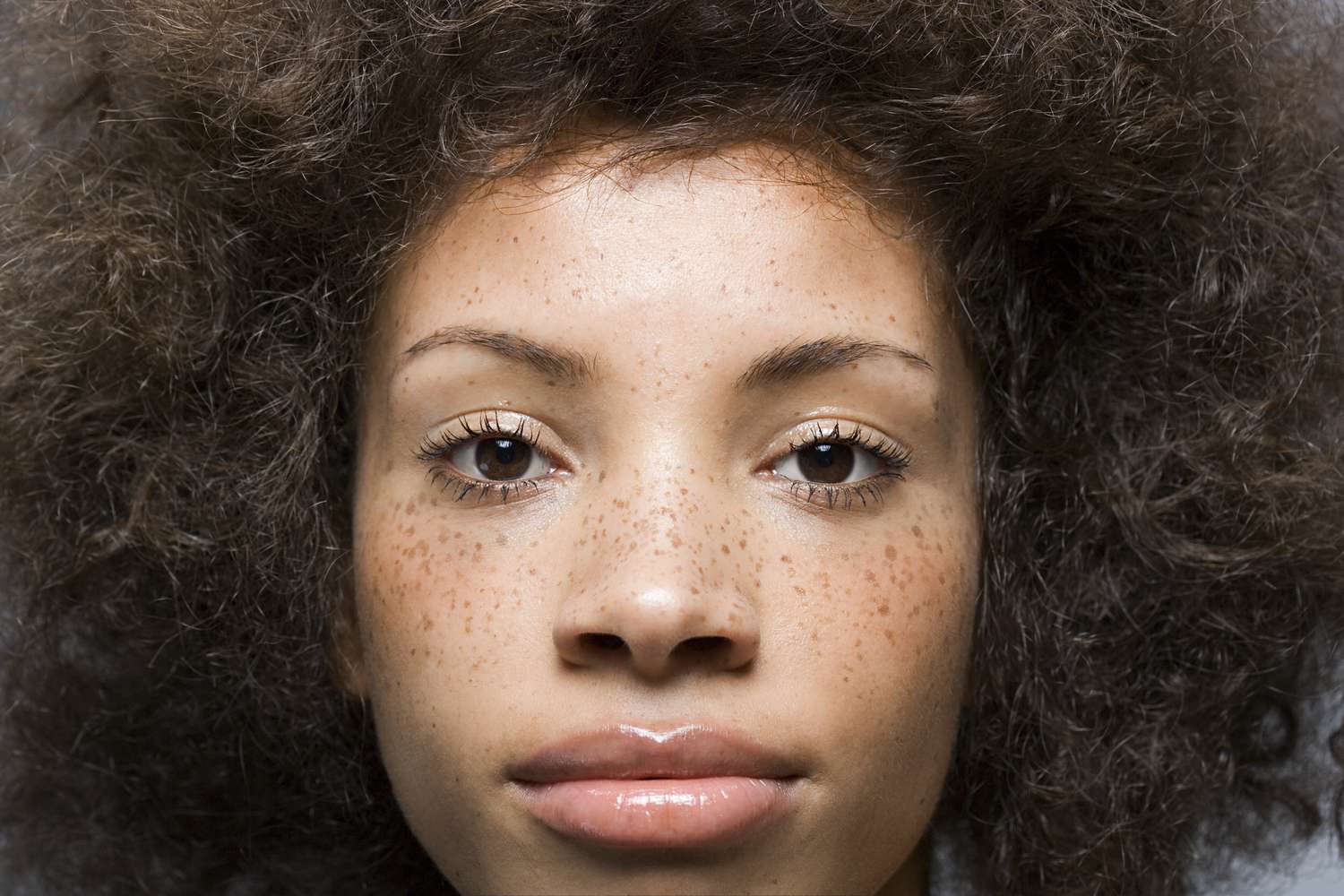
Image Source / Getty Images
If you love your freckles, you’re not alone. They give the appearance of a beautiful, fresh face, and they're uniquely you. In fact, many have actually started getting freckle tattoos or applying faux marks with eyeliner in an effort to capture the sun-kissed, youthful vibe that a smattering of freckles yields. And, with summer in full swing, many of us with natural freckles are enjoying seeing them pop up again. That said, any pigmentation that's brought on by the sun can be damaging.
According to the Skin Cancer Foundation, more people are diagnosed with skin cancer every year than all other cancers combined, and one in five Americans will develop skin cancer by age 70. While most of us are aware of the importance of keeping an eye on moles and getting regular skin cancer checks, the protocol on freckles is a bit murkier. That’s why we decided to call in the experts to get a little more insight into which freckles are harmless and when they can indicate a bigger problem. Read on for three things you need to know about your freckles.
Meet the Expert
- Keira Barr, MD, is a dual board-certified integrative dermatologist and the creator of Somatic Skin Science.
- Joshua Zeichner, MD, is the Director of Cosmetic and Clinical Research in Dermatology and an Associate Professor of Dermatology at the Mount Sinai Hospital in New York.
No, freckles probably aren’t an indication of health.
While it’s true vitamin D from the sun can be good for your body, freckles (those that pop when you're in the sun and aren't present all year-round) are a lot like a tan. They may look healthy, but they’re actually a sign of too much sun exposure. "The appearance of freckles, technically called ephelides, is a tell-tale sign of excessive sun exposure on unprotected skin," explains dual board-certified dermatologist Keira Barr, MD. See, freckles only appear on areas of our skin exposed to the sun—our faces, arms, hands, and shoulders. And their appearance signals a defense mechanism. "When we’re exposed to the sun, our skin reacts by producing melanin (skin pigment) in order to protect the deeper layers of the skin and our DNA from being damaged by UV rays."
Still, freckles don’t necessarily mean danger and they should be distinguished from other, more alarming and permanent marks like moles or sun spots. “Under the microscope, freckles have a normal number of pigment-producing cells that produce extra amounts of pigment,” says Joshua Zeichner, MD. “Unlike freckles, sunspots, also known as lentigines, develop later in life as a result of sun exposure. Once they develop, they do not fade. Under the microscope, they have an increased number of pigment-producing cells.”
If you’re someone who is naturally predisposed to freckles (typically people with lighter hair and skin), you may wonder why you were more freckle-prone as a kid than as an adult. Well, the answer isn’t exactly a fun one: We typically trade our childhood freckles for other forms of sun damage. “Freckles tend to fade with age, and as adults, we acquire other forms of pigmentation like solar lentigines and moles from excessive sun exposure. These all signal sun damage,” explains Dr. Barr. The good news, though, is that for the most part freckles are more harmless than almost any other mark that appears on the skin. “The main thing to keep in mind is that freckles are markers of sun exposure and UV-induced damage which can increase the risk for skin cancer down the road,” Dr. Barr says.
Keep an eye on your freckles over time.
While they’re mostly harmless, it’s important to keep a close eye on your freckles in the way you would any other mark on your skin. "While freckles do not necessarily represent an underlying disease and can get darker even with small amounts of UV light exposure, it’s important to notice if your freckles are getting darker," Dr. Zeichner says. "This tells you that you’re getting a good amount of sun exposure and should remind you to wear your sunscreen."
Dr. Barr adds that while freckles themselves don’t signal skin cancer, the more freckles people have, the more likely they are to develop skin cancer later in life. “Individuals with a high density of freckles were found to have a greater risk for developing melanoma than those without freckles,” she explained. In other words, if you’re freckle-prone, don’t get yourself too worked up over it—just make sure you’re visiting your dermatologist regularly and keep a close eye on any changes to your freckles that might be a sign of a problem.
Take appropriate safety measures.
While you may like the way your freckles look, and their appearance doesn’t necessarily signal long-term bad news for your skin, it’s important to remember that they’re a sign of sun damage—even if only slightly. So, taking proper precautions for preventing them is key. That means coming up with a sun protection plan and sticking to it. "This should include a wide-brimmed hat with at least a three-inch brim, sunglasses, seeking shade, eating an anti-inflammatory and antioxidant-rich diet of fruits, vegetables, healthy fats and proteins, and wearing sun-protective clothing and mineral based sunscreen," Dr. Zeichner says.
If that sounds like a lot to you, try to stick to daily sunscreen use at the very least. Dr. Zeichner suggests a wide-spectrum sunscreen with an SPF of at least 30. "Even exposure to small amounts of incidental sunlight has an effect on the skin over a lifetime,” he says. Protecting your skin is a lifelong project, but it will pay off long-term—even if it means you don’t get to tote those cute freckles and bronzed limbs as much as you’d like.
Next up: How to take care of (not get rid of) your summer freckles.

